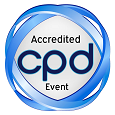
Helen Y. He
James Cook University, Australia
Title: A new approach to enhance control of oral biofilm preventing bacterial infection
Biography
Biography: Helen Y. He
Abstract
Oral cavity creates natural and artificial habitats for biofilm. Accumulated biofilm raises the incidence of caries and periodontal disease. Meanwhile, oral biofilm is a source of pathogens directly and indirectly responsible for many systematic diseases, e.g. infective endocarditis, diabetes mellitus, pneumonia and low birth weight. Hence, it becomes crucial to emphasize the control over biofilm especially in oral cavity. However, conventional control methods of tooth brushing and mouth rinsing have never shown 100% removal of biofilm. Here, we approached from a distinct perspective to understand the mechanism of the interaction between biofilm and antimicrobials aiming to provide a better control over biofilm in the future. Biofilm is widely accepted as a viscoelastic material. The mechanical analysis of viscoelasticity unveils the features of biofilms in a quantitative level. In this study, we discovered that certain components of the biofilm, determined as E1, had a negative impact on the antimicrobial penetration. Meanwhile, bacteria in biofilm, noted as E3, had a positive impact on the antimicrobial penetration (Figure). These relations have been extensively verified in several biofilm models, e.g. in vitro/ in vivo biofilms, single/ dual/ multi species biofilms, static/ flow/ compressed biofilms and brushed/ un-brushed biofilms. Besides that, the relations were also verified with antimicrobials in different mouthrinses. Considering the essential role that viscoelasticity plays in the quantitative determination of antimicrobial penetration into biofilm, we propose that the viscoelasticity should be viewed as a virulence factor of biofilm. Taking together, our findings could not only be helpful to prevent infections caused by oral biofilm in the oral cavity, but also could be useful to control biofilm preventing systematic diseases. Penetration ratio of antimicrobials as a function of components in biofilm determined as E1, E2 and E3, representing the water/light molecules, extracellular polymeric substances and bacteria of a biofilm, respectively. Dashed lines represent the 95% confidence intervals.

